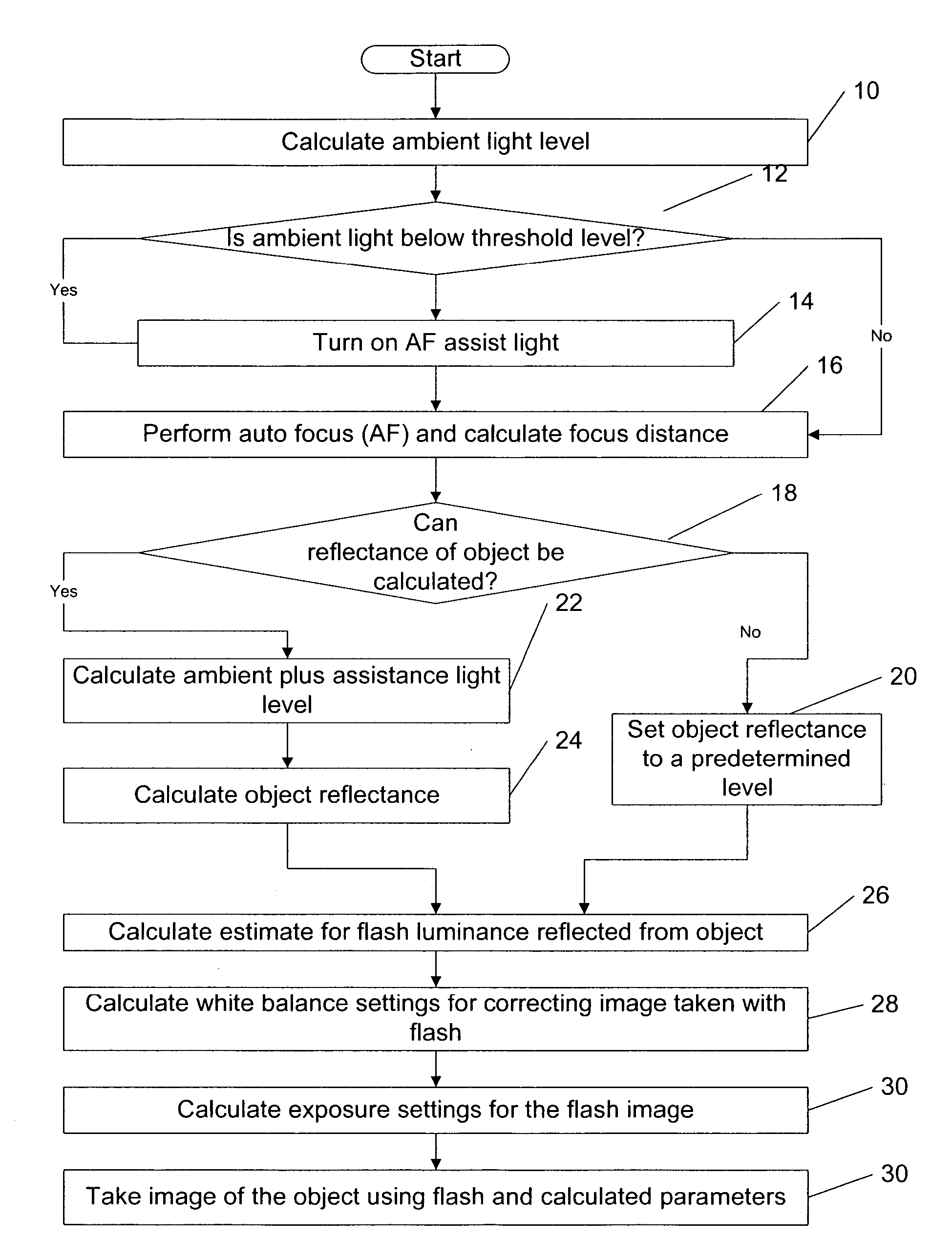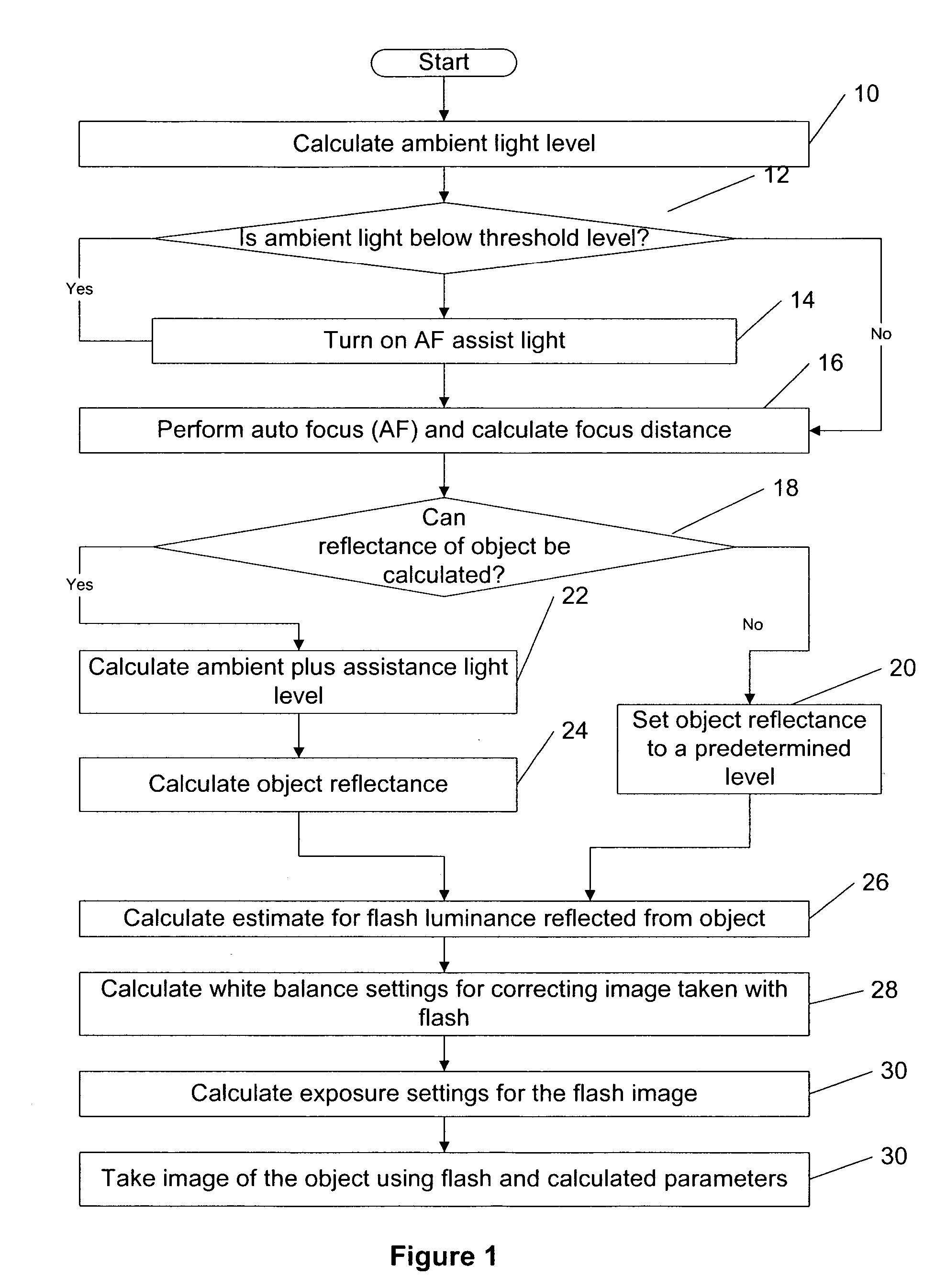Image quality in cameras using flash
a technology of image quality and flash, applied in the field of electronic devices comprising cameras, can solve the problems of limited control of image characteristics, increased power consumption, inconvenient use of filters, etc., and achieve the effect of optimizing color compensation gain
- Summary
- Abstract
- Description
- Claims
- Application Information
AI Technical Summary
Benefits of technology
Problems solved by technology
Method used
Image
Examples
Embodiment Construction
[0028] A new method, apparatus and software product for using a flash light with, e.g., light-emitting diodes (LEDs) or other light sources of a camera of an electronic device for improving quality of images provided by the camera. The electronic device can be, but is not limited to, a camera, a wireless communication device, a mobile phone, a camera-phone mobile device, a portable electronic device, non-portable electronic device, etc. The camera can have digital and / or analog processing.
[0029] According to an embodiment of the present invention, the flash related parameters, comprising a white balance setting for a color correction / compensation of an image of an object taken with the flash and / or an exposure time for the flash, can be determined using, e.g., an ambient light level and an estimate of the flash light reflected from said object. Then the image of the object taken by the camera with the flash using at least one of the determined flash related parameters will have imp...
PUM
 Login to View More
Login to View More Abstract
Description
Claims
Application Information
 Login to View More
Login to View More - R&D
- Intellectual Property
- Life Sciences
- Materials
- Tech Scout
- Unparalleled Data Quality
- Higher Quality Content
- 60% Fewer Hallucinations
Browse by: Latest US Patents, China's latest patents, Technical Efficacy Thesaurus, Application Domain, Technology Topic, Popular Technical Reports.
© 2025 PatSnap. All rights reserved.Legal|Privacy policy|Modern Slavery Act Transparency Statement|Sitemap|About US| Contact US: help@patsnap.com



